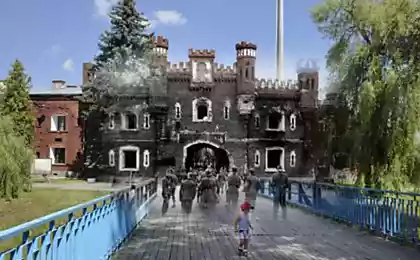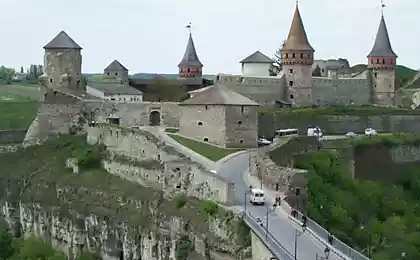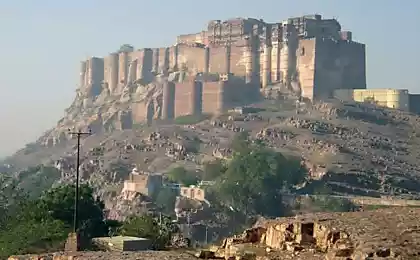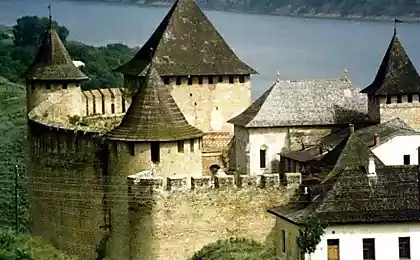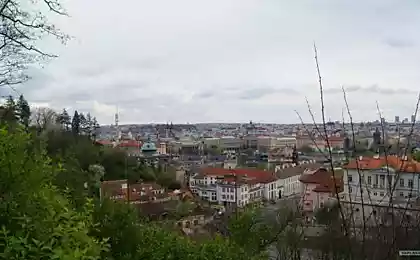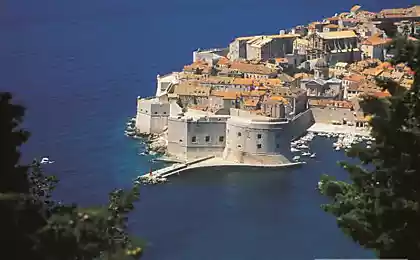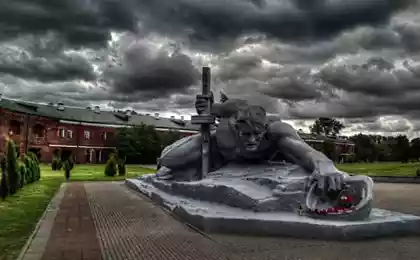1944
Symmetrical fortress city
Palmanova - symmetrical fortress city in Italy

Palmanova - fortified town with a population of about 5400 people, located in the north-east of the country about 25 km south of Udine, was founded at the end of the XVI century, with the direct support of the Government of the Republic of Venice. Palmanova was supposed to be a model of the walled city.
Older people themselves have tried to implement a utopian idea that symmetry is really helping people to live and develop. Form devyatiugolnoy star was formed so that any of the nine "corners" in case of attack could get support and help from the neighboring "angle". In the city could get through one of three gates. Inside the city consists of three "rings levels." The author of the project walled city became famous Italian architect Vincenzo Scamozzi.

October 7, 1593 was laid the first stone of the new fortress, nicknamed "the city-star" due to its shape devyatiugolnoy stars.

Palmanova was conceived primarily as a defensive structure to strengthen the borders and preventing the invasion of the Turks: the number and length of the sides of the bastions of the fortress were calculated taking into account the long range guns of the time.

During the Venetian rule the fortress was equipped with two rings fortifications with curtains, ramparts, moats and ravelins who defended three for the access to the city - from Udine, Cividale and Aquileia.
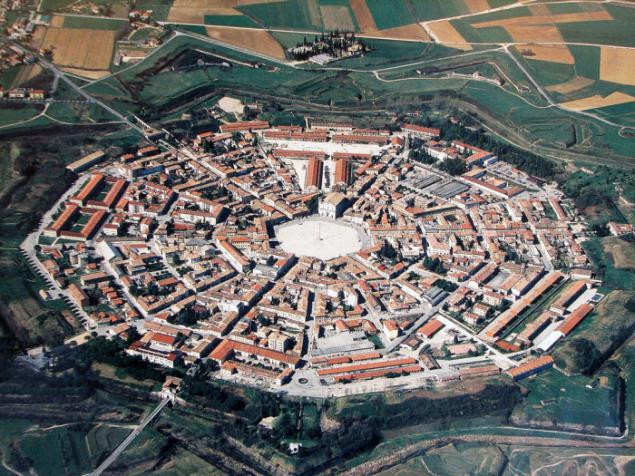
In 1797 the Austrian army entered the fortress of deceit. But the Austrians had no time to enjoy the victory, as the French took possession of the fortress. After the signing of the Camp Formiyskogo peace treaty Palmanova again went to the Austrians, who kept her for several years.

In 1805 the fortress came the French, and during this period there was a third circle of fortifications. In 1814, the city-star returned to the Habsburgs.
In the days of Austrian rule (1815-1866) was built by the Public Theater, which has become the main distributor of ideas Risorgimento.
In 1848 the townspeople, led by General Zucchi revolted against the Austrians. In 1866 Palmanova joined the Kingdom of Italy.
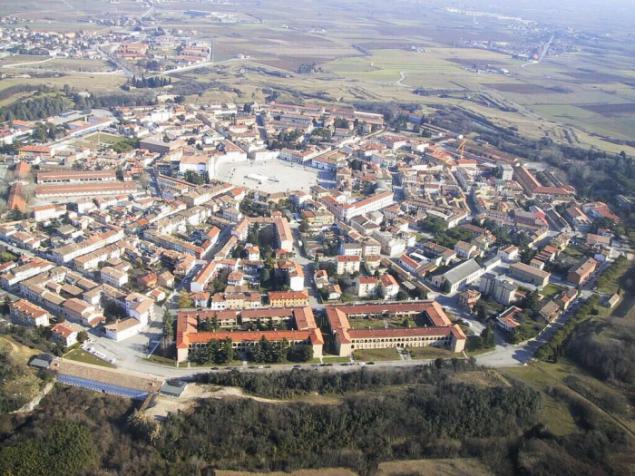
During the First World War, the fortress became the center of the distribution and supply of the army. After the Battle of Caporetto the town was set on fire by the retreating troops of the Italian Army.
Decree of the President of the Italian Republic in 1960 Palmanova was declared National Monument.
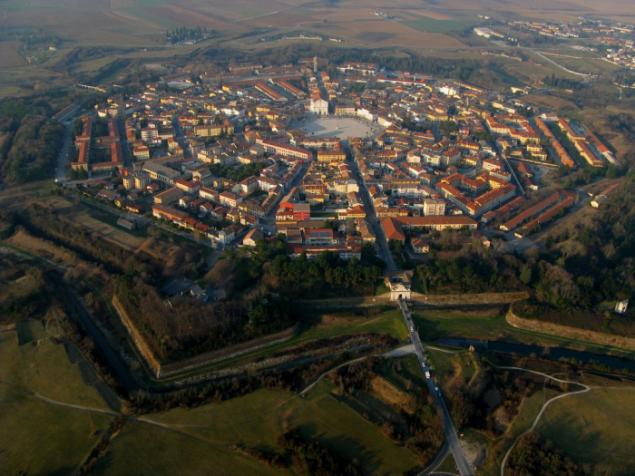






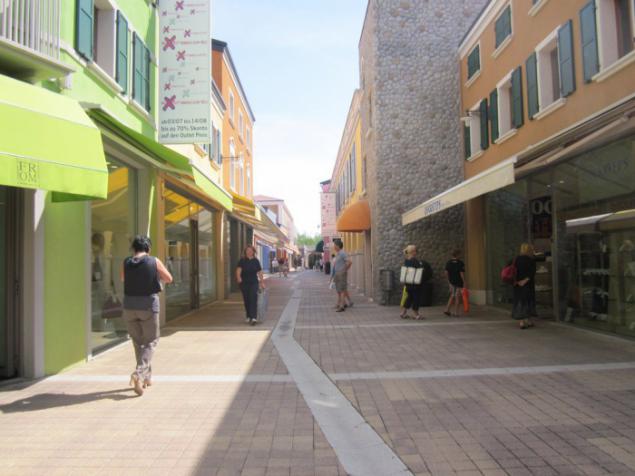
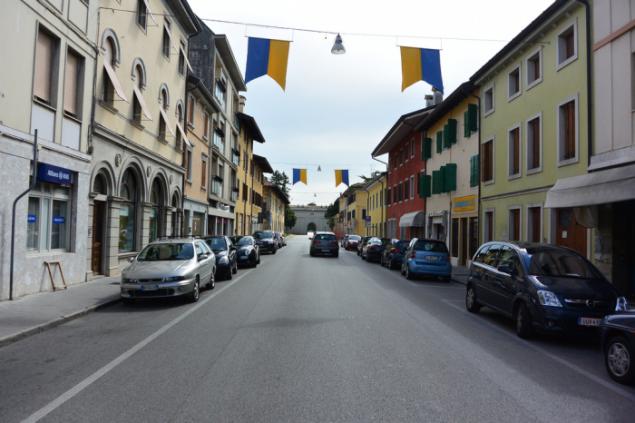
©

Palmanova - fortified town with a population of about 5400 people, located in the north-east of the country about 25 km south of Udine, was founded at the end of the XVI century, with the direct support of the Government of the Republic of Venice. Palmanova was supposed to be a model of the walled city.
Older people themselves have tried to implement a utopian idea that symmetry is really helping people to live and develop. Form devyatiugolnoy star was formed so that any of the nine "corners" in case of attack could get support and help from the neighboring "angle". In the city could get through one of three gates. Inside the city consists of three "rings levels." The author of the project walled city became famous Italian architect Vincenzo Scamozzi.

October 7, 1593 was laid the first stone of the new fortress, nicknamed "the city-star" due to its shape devyatiugolnoy stars.

Palmanova was conceived primarily as a defensive structure to strengthen the borders and preventing the invasion of the Turks: the number and length of the sides of the bastions of the fortress were calculated taking into account the long range guns of the time.

During the Venetian rule the fortress was equipped with two rings fortifications with curtains, ramparts, moats and ravelins who defended three for the access to the city - from Udine, Cividale and Aquileia.

In 1797 the Austrian army entered the fortress of deceit. But the Austrians had no time to enjoy the victory, as the French took possession of the fortress. After the signing of the Camp Formiyskogo peace treaty Palmanova again went to the Austrians, who kept her for several years.

In 1805 the fortress came the French, and during this period there was a third circle of fortifications. In 1814, the city-star returned to the Habsburgs.
In the days of Austrian rule (1815-1866) was built by the Public Theater, which has become the main distributor of ideas Risorgimento.
In 1848 the townspeople, led by General Zucchi revolted against the Austrians. In 1866 Palmanova joined the Kingdom of Italy.

During the First World War, the fortress became the center of the distribution and supply of the army. After the Battle of Caporetto the town was set on fire by the retreating troops of the Italian Army.
Decree of the President of the Italian Republic in 1960 Palmanova was declared National Monument.









©


